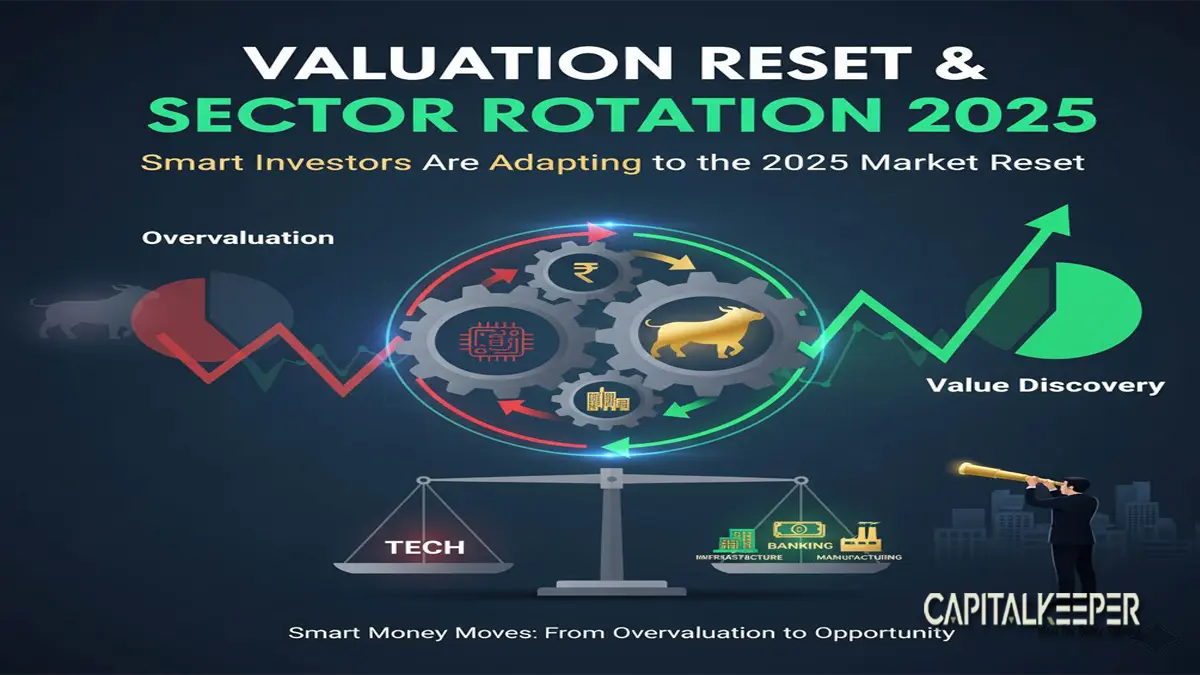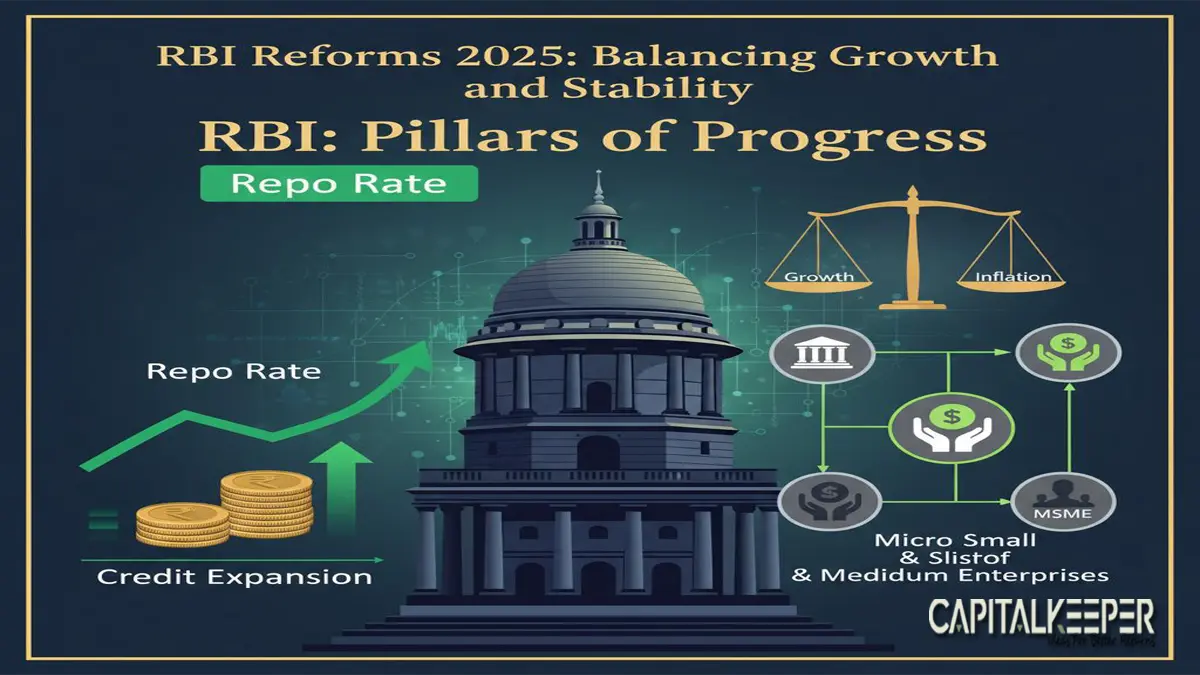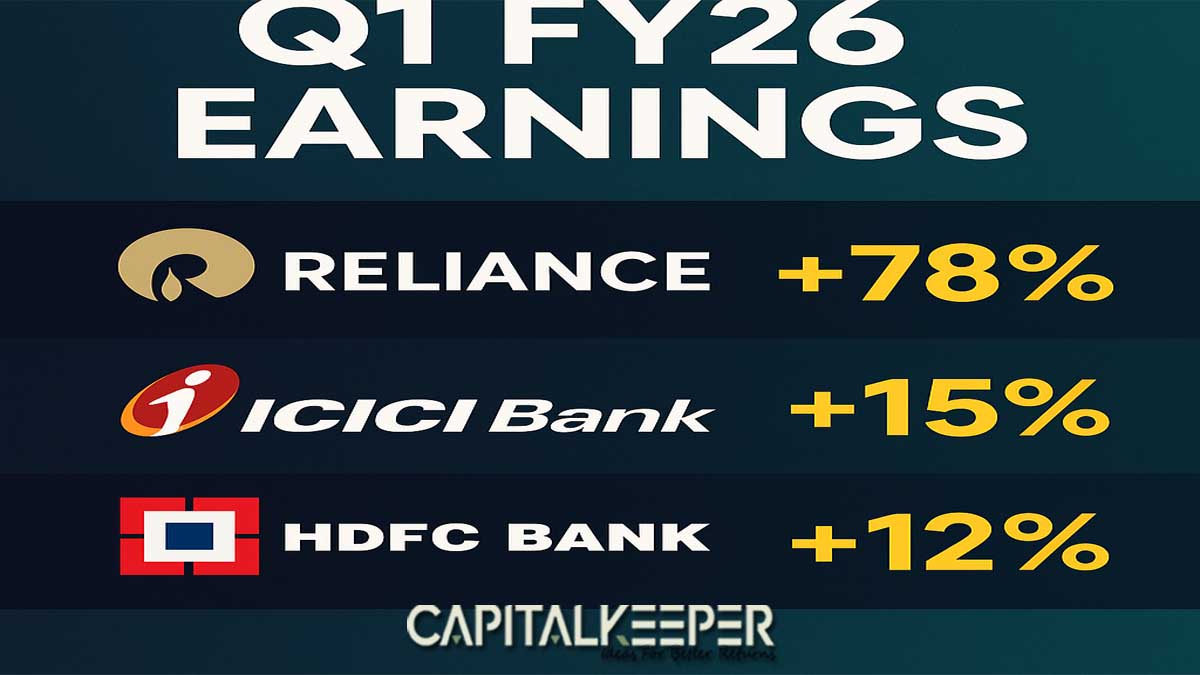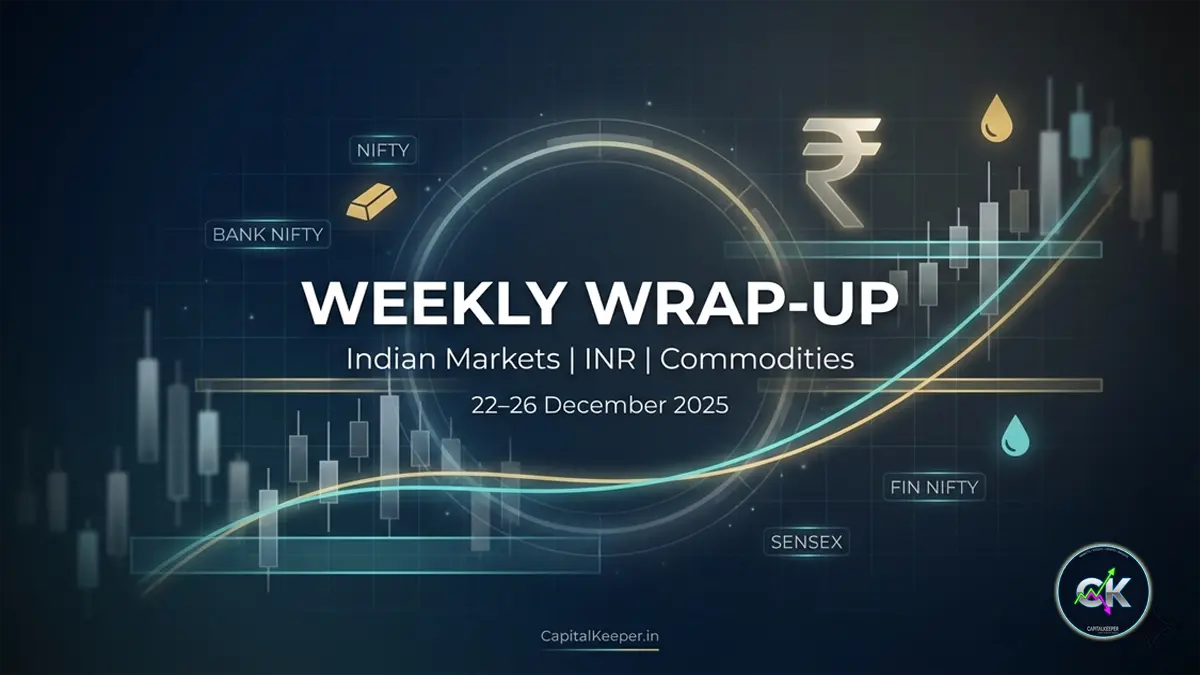RBI Keeps Repo Rate at 5.5%: Impact on Indian Stock Market & Sectors
By CapitalKeeper | RBI Policy | Indian Economy | Market Moves That Matter
RBI Keeps Repo Rate Unchanged at 5.5%: What It Means for Indian Stock Market Amid Global Tariff Uncertainty
The Reserve Bank of India (RBI) on August 6, 2025, announced the outcome of its Monetary Policy Committee (MPC) meeting, delivering a decision that most market participants had already anticipated – the repo rate remains unchanged at 5.5%. This steady stance comes at a time when India’s economy is navigating a delicate balance between domestic growth momentum, moderating inflationary pressures, and global macroeconomic headwinds.
In this blog, we break down the key highlights of the policy announcement, RBI’s growth outlook, the muted impact of US tariff developments, and what this policy stance means for the Indian stock market in the current context.
Key Highlights of the August MPC Meeting
- Repo Rate Status: The policy repo rate has been maintained at 5.5%, with no change for the fourth consecutive review. The reverse repo rate and the marginal standing facility (MSF) also remain aligned with this decision.
- Stance of Policy: The RBI has continued with its “withdrawal of accommodation” stance, signaling that while inflation is moderating, the central bank remains vigilant.
- Growth Outlook: The RBI has retained its real GDP growth forecast at 6.5% for FY2025-26, reflecting confidence in domestic economic resilience despite global uncertainties.
- Inflation Guidance: Consumer Price Index (CPI) inflation is expected to average around 4.5%-5% for the year, staying within the RBI’s tolerance band of 2-6%.
- External Cues: The central bank acknowledged ongoing global trade tensions, particularly US tariff policies, but emphasized that India’s diversified trade structure cushions any major downside risk.
Why RBI Opted for Status Quo?
1. Inflation Moderation, But Not Fully Anchored
Headline inflation has cooled from last year’s highs, aided by easing food prices and stable crude oil levels. However, core inflation (excluding food and fuel) remains sticky in some segments like housing and services. By keeping the repo rate steady, RBI aims to maintain price stability while supporting growth.
2. Growth Momentum Intact
High-frequency indicators such as GST collections, manufacturing PMI, power demand, and credit growth show continued expansion. RBI’s unchanged GDP growth forecast of 6.5% signals confidence in consumption revival and private capex cycle pickup.
3. Global Backdrop – Waiting for Clarity
With the US Federal Reserve expected to signal rate cuts later in 2025 and China showing signs of stimulus-led recovery, RBI seems to prefer a wait-and-watch approach rather than preemptively cutting rates.
US Tariff Impact – Why It’s Minimal for India
Recently, the US administration hinted at potential tariff hikes on select goods from Asian economies, raising concerns of another wave of trade disruptions. However, the RBI Governor clearly stated that India’s economy is relatively insulated for three reasons:
- Diverse Export Basket: India’s exports are spread across IT services, pharma, textiles, and engineering goods, reducing dependence on any single category targeted by tariffs.
- Rising Domestic Demand: A robust domestic consumption base ensures that external shocks don’t derail overall growth momentum.
- Strengthening Trade Alliances: India’s growing ties with Middle Eastern, European, and ASEAN markets help offset risks from US policy shifts.
Hence, while sectors like IT services or select manufacturing exporters may face temporary sentiment swings, the broader market impact is likely to remain muted.
Implications for the Indian Stock Market
The decision to keep the repo rate unchanged at 5.5% has several near-term and medium-term implications for equity markets:
1. Banking and Financial Sector
- Positive for NIMs (Net Interest Margins): A stable rate environment ensures lending rates remain predictable, benefiting banks’ profitability.
- Credit Growth Continuity: Credit demand from retail and corporate segments should continue, especially with festive season approaching.
- NBFCs & Housing Finance: These companies may see steady borrowing costs, supporting affordable housing and vehicle finance demand.
Key Beneficiaries: HDFC Bank, ICICI Bank, SBI, Bajaj Finance, LIC Housing Finance.
2. Interest-Sensitive Sectors (Real Estate, Autos)
- Real Estate: Steady rates help sustain momentum in residential demand, particularly in mid-income and luxury segments.
- Automobiles: EMI affordability remains intact, which supports vehicle sales during the upcoming festive period.
3. FMCG and Consumer Stocks
- With inflation moderating, input cost pressures are easing for FMCG companies, improving margins. Stable rates also ensure rural demand revival continues, benefiting consumer stocks like Hindustan Unilever, ITC, and Dabur.
4. Export-Oriented Sectors (IT, Pharma)
- Minimal direct impact from the rate decision, but positive sentiment emerges from RBI’s assurance that US tariff impacts will be limited.
- IT companies may still face margin pressure from currency volatility but are better placed compared to peers in other emerging markets.
5. Market Liquidity and FIIs
- A pause in rate hikes ensures liquidity conditions remain neutral to supportive.
- With global central banks expected to ease later this year, Foreign Institutional Investors (FIIs) may increase allocations to emerging markets like India, providing tailwinds for indices.
Technical Picture – Nifty & Bank Nifty
- Nifty 50: The index has been consolidating around 24,600-24,800 levels. The policy outcome provides stability rather than a trigger for big moves. A breakout above 24,850 could open doors for 25,200, while support lies near 24,400.
- Bank Nifty: Currently hovering near 55,300-55,400, the sector benefits from stable rates. A move above 55,800 may fuel momentum toward 56,500, whereas support remains at 54,800.
Investor Takeaways
- No Knee-Jerk Reaction Expected: The decision aligns with market expectations; hence, volatility is likely to stay contained.
- Focus on Earnings and Sectors: Investors should prioritize sectors benefiting from consumption revival and capex cycles.
- Balanced Allocation: Maintain exposure to large-cap banks, select autos, and FMCG, while gradually adding defensives like IT and pharma for diversification.
- Watch Global Cues: While US tariffs may not significantly impact India, developments in crude oil prices, Fed policy, and geopolitical tensions remain crucial.
Conclusion
The RBI’s decision to maintain the repo rate at 5.5% underscores its cautious optimism – growth remains healthy, inflation is under control, and external shocks like US tariffs appear manageable. For the Indian stock market, this is not a game-changing policy but rather a reaffirmation of stability. Investors should leverage this calm phase to position portfolios in line with structural growth stories rather than chasing short-term volatility.
📌 For daily trade setups, technical learning, and smart investing tips, stay tuned to CapitalKeeper.in
📌 For more real-time updates, trade setups, and investment insights — follow us on [Telegram] and [WhatsApp Channel] subscribe to our newsletter!

📌 Disclaimer
The content provided on CapitalKeeper.in is for informational and educational purposes only and does not constitute investment, trading, or financial advice. While we strive to present accurate and up-to-date market data and analysis, we make no warranties or representations regarding the completeness, reliability, or accuracy of the information.
Stock market investments are subject to market risks, and readers/investors are advised to conduct their own due diligence or consult a SEBI-registered financial advisor before making any investment decisions. CapitalKeeper and its authors are not liable for any loss or damage, direct or indirect, arising from the use of this information.
All views and opinions expressed are personal and do not reflect the official policy or position of any agency or organization. Past performance is not indicative of future results.By using this website, you agree to the terms of this disclaimer.
















Leave a Reply